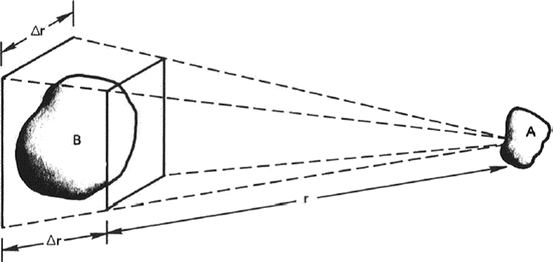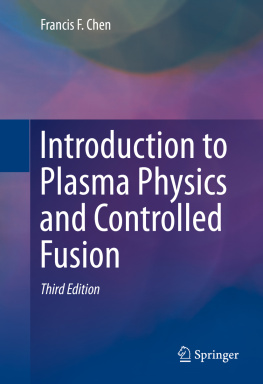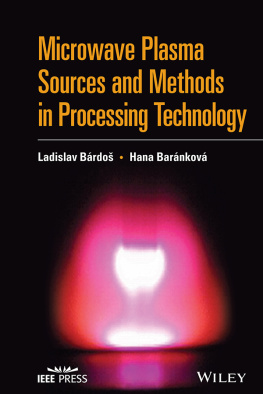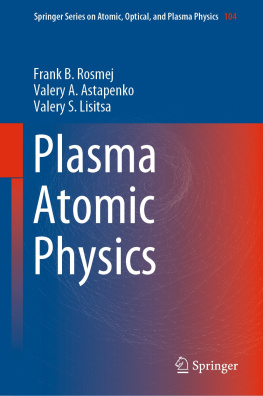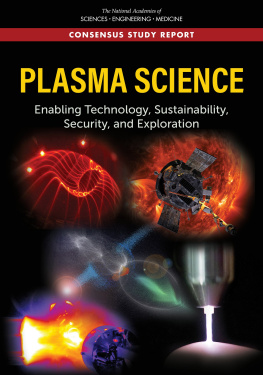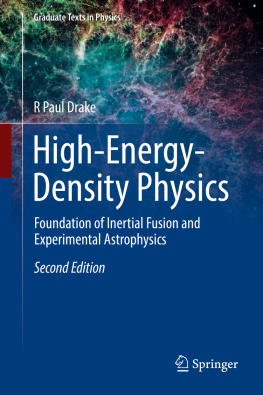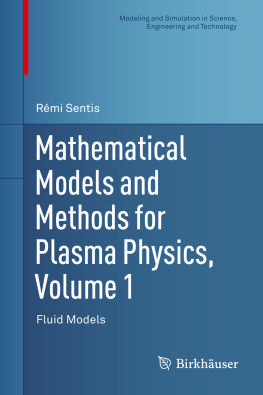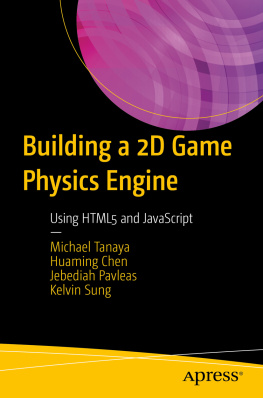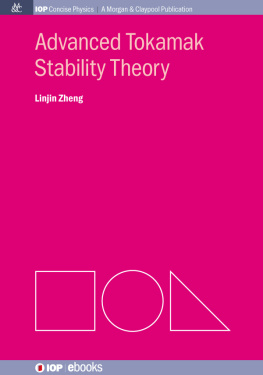1.1 Occurrence of Plasmas in Nature
It is now believed that the universe is made of 69 % dark energy, 27 % dark matter, and 1 % normal matter. All that we can see in the sky is the part of normal matter that is in the plasma state, emitting radiation. Plasma in physics, not to be confused with blood plasma, is an ionized gas in which at least one of the electrons in an atom has been stripped free, leaving a positively charged nucleus, called an ion. Sometimes plasma is called the fourth state of matter. When a solid is heated, it becomes a liquid. Heating a liquid turns it into a gas. Upon further heating, the gas is ionized into a plasma. Since a plasma is made of ions and electrons, which are charged, electric fields are rampant everywhere, and particles collide not just when they bump into one another, but even at a distance where they can feel their electric fields. Hydrodynamics, which describes the flow of water through pipes, say, or the flow around boats in yacht races, or the behavior of airplane wings, is already a complicated subject. Adding the electric fields of a plasma greatly expands the range of possible motions, especially in the presence of magnetic fields.
Plasma usually exists only in a vacuum. Otherwise, air will cool the plasma so that the ions and electrons will recombine into normal neutral atoms. In the laboratory, we need to pump the air out of a vacuum chamber. In the vacuum of space, however, much of the gas is in the plasma state, and we can see it. Stellar interiors and atmospheres, gaseous nebulas, and entire galaxies can be seen because they are in the plasma state. On earth, however, our atmosphere limits our experience with plasmas to a few examples: the flash of a lightning bolt, the soft glow of the Aurora Borealis , the light of a fluorescent tube, or the pixels of a plasma TV. We live in a small part of the universe where plasmas do not occur naturally; otherwise, we would not be alive.
The reason for this can be seen from the Saha equation , which tells us the amount of ionization to be expected in a gas in thermal equilibrium :
Here n i and n n are, respectively, the density (number per m3) of ionized atoms and of neutral atoms, T is the gas temperature in K, K is Boltzmanns constant, and U i is the ionization energy of the gasthat is, the number of joules required to remove the outermost electron from an atom. (The mks or International System of units will be used in this book.) For ordinary air at room temperature, we may take n n 31025 m3 (see Problem ) is ridiculously low:
As the temperature is raised, the degree of ionization remains low until U i is only a few times KT . Then n i / n n rises abruptly, and the gas is in a plasma state. Further increase in temperature makes n n less than n i , and the plasma eventually becomes fully ionized. This is the reason plasmas exist in astronomical bodies with temperatures of millions of degrees, but not on the earth. Life could not easily coexist with a plasmaat least, plasma of the type we are talking about. The natural occurrence of plasmas at high temperatures is the reason for the designation the fourth state of matter.
Although we do not intend to emphasize the Saha equation , we should point out its physical meaning. Atoms in a gas have a spread of thermal energies, and an atom is ionized when, by chance, it suffers a collision of high enough energy to knock out an electron. In a cold gas, such energetic collisions occur infrequently, since an atom must be accelerated to much higher than the average energy by a series of favorable collisions. The exponential factor in Eq. (). The plasma in the interstellar medium owes its existence to the low value of n i (about 1 per cm3), and hence the low recombination rate.
1.2 Definition of Plasma
Any ionized gas cannot be called a plasma , of course; there is always some small degree of ionization in any gas. A useful definition is as follows:
A plasma is a quasineutral gas of charged and neutral particles which exhibits collective behavior .
We must now define quasineutral and collective behavior . The meaning of quasineutrality will be made clear in Sect.. What is meant by collective behavior is as follows.
Consider the forces acting on a molecule of, say, ordinary air. Since the molecule is neutral, there is no net electromagnetic force on it, and the force of gravity is negligible. The molecule moves undisturbed until it makes a collision with another molecule, and these collisions control the particles motion. A macroscopic force applied to a neutral gas, such as from a loudspeaker generating sound wave s , is transmitted to the individual atoms by collisions. The situation is totally different in a plasma , which has charged particles. As these charges move around, they can generate local concentrations of positive or negative charge, which give rise to electric fields. Motion of charges also generates currents, and hence magnetic fields. These fields affect the motion of other charged particles far away.
Let us consider the effect on each other of two slightly charged regions of plasma separated by a distance r (Fig. ). The Coulomb force between A and B diminishes as 1/ r 2. However, for a given solid angle (that is, r / r =constant), the volume of plasma in B that can affect A increases as r . Therefore, elements of plasma exert a force on one another even at large distances. It is this long-ranged Coulomb force that gives the plasma a large repertoire of possible motions and enriches the field of study known as plasma physics. In fact, the most interesting results concern so-called collisionless plasmas, in which the long-range electromagnetic forces are so much larger than the forces due to ordinary local collisions that the latter can be neglected altogether. By collective behavior we mean motions that depend not only on local conditions but on the state of the plasma in remote regions as well.
Fig. 1.1
Illustrating the long range of electrostatic forces in a plasma
The word plasma seems to be a misnomer. It comes from the Greek , , , which means something molded or fabricated. Because of collective behavior , a plasma does not tend to conform to external influences; rather, it often behaves as if it had a mind of its own.
1.3 Concept of Temperature
Before proceeding further, it is well to review and extend our physical notions of temperature . A gas in thermal equilibrium has particles of all velocities, and the most probable distribution of these velocities is known as the Maxwellian distribution . For simplicity, consider a gas in which the particles can move only in one dimension. (This is not entirely frivolous; a strong magnetic field, for instance, can constrain electrons to move only along the field lines.) The one-dimensional Maxwellian distribution is given by


